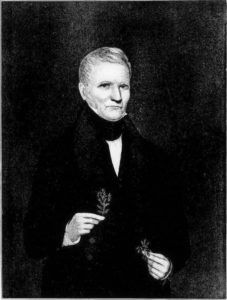Calendula, comfrey, plantain and chamomile all have a long history of traditional use as skin supporting herbs. They also share many of the same actions (Wichtl and Bisset, 1994). The Commission E expanded monograph indicates the use of calendula for poorly healing wounds, bruises, boils and rashes. Similarly, comfrey is indicated for pain, inflammation contusions and injuries although it is contraindicated for deep puncture wounds. Plantain is a vulnerary and anti-microbial and anti-inflammatory.
The components of the salve are 90.8% Infused oils and ethyl-oil extractions, 9% beeswax and 0.2% Lavandula angustifolia essential oil. The infused oil formula consists of: 7 parts Calendula officinalis infused olive oil, 6 parts Plantago major infused olive oil, 5 parts Symphytum officinalis sweet almond oil and 2 parts of Matricaria recutita ethyl-oil extract comprised of M. recutita infused apricot kernel oil with an of M. recutita 1:5 60%.
The calendula and chamomile were harvested from my garden in late summer of 2015, dried on racks and stored in amber bottles in a climate controlled room. The dried organic c/s plantain leaf which originated in Bulgaria, was purchased from Mountain Rose Herbs Lot 22223. The beeswax is also from mountain rose, Lot# B8589. The dried organic c/s comfrey leaf which originated in Croatia, was purchased from Starwest Botanicals Lot# 62288. The M. recutita tincture was produced in January 2016 using the scientific maceration method. The olive and sweet almond oils of unknown origin were purchased from Essential Depot. Their 25 digit batch numbers are available upon request. The Turkish apricot kernel oil is beauty aura brand with no batch number but an expiration date of 12/1/2017. The oils were all infused using the “warm digestion method” (Green, 2002, p. 194.)
The ethyl-oil extraction was chosen for chamomile as a method of increasing the quantity of terpenes such as alpha-Bisabolol, matricarin and matricin, the distinctive chamazulene and phenolic coumarins relative to volume of chamomile infused oil in the final product. These constituents are considered to be anti-inflammatory (Hoffman, 2003) and contribute to chamomile’s vulnerary properties (Braun & Cohen, 2010). All of these constituents are well extracted in hydroethanolic solutions. The ethanol and water can then be evaporated increasing the levels of constituent in the oil solution.
Organoleptically all of the infused oils embody the energetics of the infused herbs. The calendula oil is an orange yellow in color indicating a good extraction of the carotenoids and has the aromatic qualities of the flower. The comfrey oil and was an opaque dark green in color and had the grassy sweet smell of steroidal saponins. The plantain oil was also an opaque dark green in color and had the distinctive pepper scent of plantain tea. The chamomile oil was a rich translucent and had the characteristic aromatic and bitter scent of the therapeutic volatile oils and coumarins as well a yellow color tint. The chamomile oil was translucent. None of the infused oils had the scent of fixed carrier oil.
To create the salve all glassware and containers were sterilized. 150ml of chamomile was combined with 100ml of M. recutita 1:5 60% in a boiling flask and heated to 130F until the ethanol and h20 have evaporated. The ethanol was vented during this process. This yielded 150ml of chamomile ethyl-oil extract. This was combined with 550ml of the calendula oil, 475ml of plantain oil, 325ml of the comfrey oil and 165g of beeswax shavings. The mixture was covered, heated to 150F until the beeswax was melted. The mixture was blended with a stick blender until uniform consistency was reached. A small sample was frozen to check viscosity of the final mixture. 3ml of lavandula angustifolia essential oil was added and the mixture was stick-blended again. The mixture was poured off into containers capped and allowed to dry. After wastage, the yield was approx. 1600ml 13 four oz jars and 2 1oz tins were filled.
The salve is a yellow in color with a slight front scent of lavender and a sweet scent of the combined aromatics of the infused oils. It is initially greasy but ultimately is absorbed leaving a slight sheen on the skin. I was aiming for a salve without overpowering scent that was on the softer side so it cold be spread on wounds.
Next time I make it I would source higher quality oils, use exclusively almond and apricot oil instead of olive oil. I would also source better jars because some of the blue chipped off during boiling.
References:
Braun, L., & Cohen, M. (2010). Herbs & natural supplements: An evidence-based guide. Sydney: Elsevier Australia
Green, J. (2000). The herbal medicine-makers’ handbook: A home manual. Freedom, CA: The Crossing Press.
Hoffmann, D. (2003). Medical herbalism: The science and practice of herbal medicine. Rochester, VT: Healing Arts Press.
Wichtl, M. and N.G. Bisset (eds.). 1994. Herbal Drugs and Phytopharmaceuticals. Stuttgart: Medpharm Scientific Publishers.
